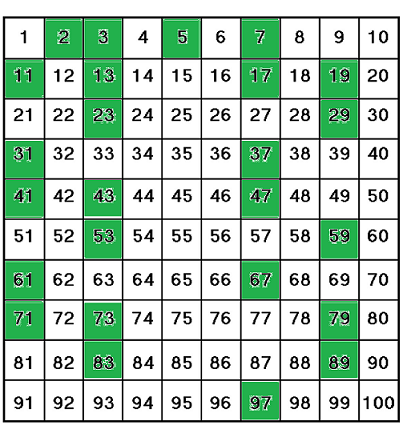Math Definitions - Letter P
Chapters
Prime Number
Definition of Prime Number

A prime number is a whole number that has exactly two factors: itself and \(1\).
For example, \(2\) only has the factors of \(1\) and \(2\) (it can only be divided evenly by \(1\) and \(2\)), so it is a prime number.
The diagram shows the prime numbers between \(1\) and \(100\), shaded in green.
Numbers which can be divided evenly by numbers other than themselves and \(1\) are called composite numbers. For example, \(15 = 5 \times 3\) is a composite number.
Note that \(1\) is neither prime nor composite.
Description
The aim of this dictionary is to provide definitions to common mathematical terms. Students learn a new math skill every week at school, sometimes just before they start a new skill, if they want to look at what a specific term means, this is where this dictionary will become handy and a go-to guide for a student.
Audience
Year 1 to Year 12 students
Learning Objectives
Learn common math terms starting with letter P
Author: Subject Coach
Added on: 6th Feb 2018
You must be logged in as Student to ask a Question.
None just yet!